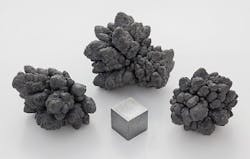Microbots could be used to clean up industrial wastewater, reveals German research
BERLIN, Germany – A swarm of thousands of tiny microbots could be the next solution to remove toxic heavy metals and contamination from industrial wastewater, new research has revealed.
Researchers at the Max-Planck Institute for Intelligent Systems in Stuttgart, Germany claim the microbots, called graphene oxided-based microbots (GOx-microbots) can remove 95% of lead in polluted water in one hour and can be reused multiple times.
As part of the work, with a paper published in Nano Letters, researchers designed tube-shaped GOx-microbots. A graphene oxide layer was used absorb lead from wastewater, from 1000 parts per billion (ppb) to below 50 ppb in 60 minutes.
Meanwhile, a middle layer of nickel enabled the microbots’ direction to be controlled by an external magnetic field. Also, when they are finished, the magnetic field can be used to collect them to be recovered and reused.
Finally, an inner layer of platinum enables the bots to propel themselves through water.
Samuel Sanchez from the Max-Planck institute told Phy.org: “This work is a step toward the development of a smart remediation system where we can target and remove traces of pollutant without producing an additional contamination.”
Smaller than a width of a human hair, it is hoped the development of the micro-bots could eventually offer a solution that is faster and cheaper than conventional methods.
###
Read more

